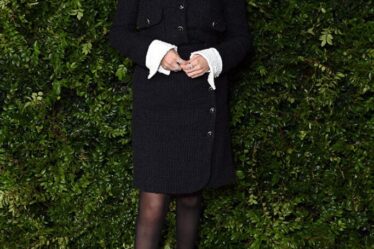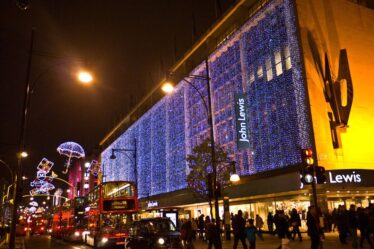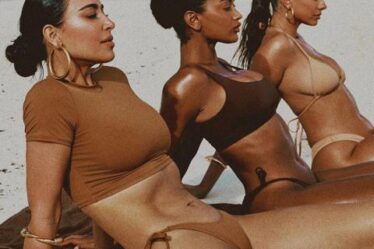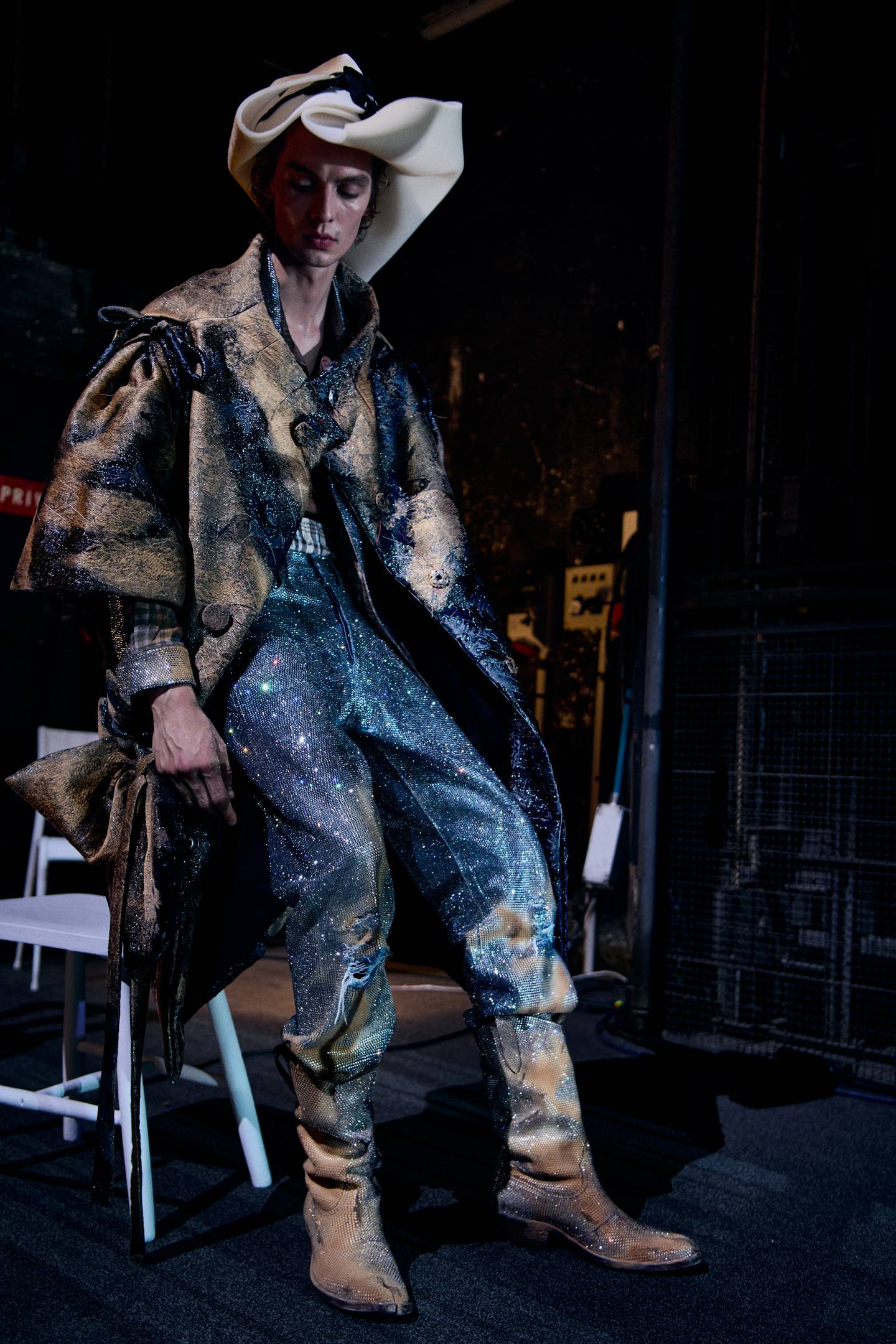
PARIS — “Euphoria’s got nothing on this script,” John Galliano enthused about the story he’d written for Maison Margiela’s latest Artisanal presentation. Young lovers on the lam, fleeing through the American badlands, hotly pursued by vigilantes? It could have been … well, Badlands. Or Natural Born Killers. Or Bonnie and Clyde. Galliano said his inspiration was “all the films that have had an influence on me and made me the man I am today.” You have to stir A Streetcar Named Desire and Suddenly, Last Summer into the mix to complete the picture the designer was making. Because that’s what he was actually doing in front of our eyes.
Collaborating with the British theatre company Imitating the Dog, Galliano simultaneously lensed and screened a film, Cinema Inferno, acted and lip-synced by a cast of 59 of his model “muses,” male and female. The narrative was dense: flashbacks showed the young protagonists meeting, falling in love, turned into step-siblings by the marriage of their villainous parents (that was a Euphoria moment!), murdering Mum and Dad, then fleeing, before they die in a shootout with their spectral pursuers in an old cinema, at which point they transcend this brutal world for the magical realm of the movies. Blanche Dubois arrives as a ghostly guardian angel. Suddenly Count and Hen are back in their car, driving through the badlands again, in an eternal, purgatorial loop. And all of this in a pell-mell 29 minutes.
The skeletal but evocative production recalled Lars von Trier’s Dogville. One audience member mentioned Ivo Van Hove, another director with a knack for building intense narratives around the barest theatrical bones. But storytelling has been the driver of every Galliano collection. He’s always spinning a yarn around a character, and haute couture, where clothes and personality are in closest communion, is his ideal fashion medium.
This was the first time the designer had staged a physical event in three years and it was something of a wrench because he had so fallen in love with making films for his collections during lockdown. But he managed to combine the two processes: the sweeping physicality of a grand Galliano fashion show captured in intimate detail by the constantly circling cameramen, moving in seamless choreography across a huge stage inside the Théâtre de Chaillot. “99 camera angles!” the designer marvelled.
How did the challenge compare with, say, his mindblowing Dior couture show at the Opéra Garnier in 1998? “There is no comparison with the work I did then. You can’t imagine, because you’re dealing not just with a collection but also how it looks on film.” Mock-exhausted, he added, “So one a year will suit me fine.”
59 characters, 59 looks, spanning a spectrum of techniques so exhaustive Galliano said that someone is compiling them all in an encyclopaedia. Like “sandstorming.” The spectral cowboys wore dusters in jacquards minutely beaded and flocked to look like they’d just walked out of a desert storm. Or “recicla.” Here, three shoes were recycled into one Tabi-toed pump. (A striking example married Vivier, Lacroix and YSL.) Prom dresses were also three in one, creating an artfully undulating trapeze line. For the red of Anna Cleveland’s dress, Atelier Dynale duplicated Yardley’s long discontinued lipstick shade Coral, which Galliano had been obsessed with ever since he gave Faye Dunaway a lift and she proceeded to paint her lips from a cherished tube of Coral she kept in a ziplock bag in her purse. The cape that Count’s father wore to his wedding was lined in an 18th century kimono. His shoes were Tabi’s, modelled on Florsheim’s classic policeman’s shoe, but glossed with a glittering scarab finish. A parade of nurses — Valletta! Elson! Trentini! — wore hospital scrubs-cum-capebacked coats in duchesse satin. At the far end of the fabric spectrum, a fringed dress was created from strips of black bin-bag plastic, stretched and hand-rolled.
The spirit of subversion was as strong as ever. “I love the sense of refocus it brings,” said Galliano. “It’s important, as is my sense of irony.” There may even be a category for it in the upcoming encyclopaedia: “appropriate inappropriate.” Maybe there was a time when Galliano sought perfection. “How dare I even think I would go there?” he mocked himself. He’d rather acknowledge how beautiful the imperfect is. “It’s easier for me now because I’m a little more grounded, a little more present in the moment.” And Maison Margiela offers an authentic environment for that kind of self-expression.
If Cinema Inferno depicted a kind of spiral into madness, Galliano claimed there was a seam of autobiography running through the story. “Biographical things I’ve had to deal with in my life, situations with family, lots of problems growing up gay.” He defined the theme of the narrative as “abuse of power” — the abusive father, the surgeon who plays God, the judge who misjudges, the corrupt sheriff. The fact that this grimness was wreathed in visions of extreme beauty felt appropriately inappropriate, as Galliano himself might say. The glass of fashion has cracked from side to side.
The day after John Galliano revealed the 18th century kimono lining one of his couture capes, designer Kim Jones was talking about the same thing. It’s not the first time they’ve been on the same wavelength. Galliano famously bought half of Jones’ graduate collection from Central Saint Martins. And Jones has taken inspiration from Galliano’s Dior years for his Dior Men collections.
His latest couture collection for Fendi patchworked strips of kimono silk based on designs from the 1700s into languid turtlenecked gowns. As soon as Jones was allowed back in March, he’d headed to Japan where, in Kyoto, he was entranced by fragments of ancient kimonos. He took them to the company which made them originally — the same family still running it — and got them to reproduce the garments. “I wanted a conversation between Kyoto and Rome, both ancient, powerful cities, mixed with the savoir-faire of all the ateliers in Paris,” Jones explained. “I was looking at something that I love, the craftsmanship, the techniques that belong in the haute couture world, and hand-painted kimono silk seemed like an essential fabric.”
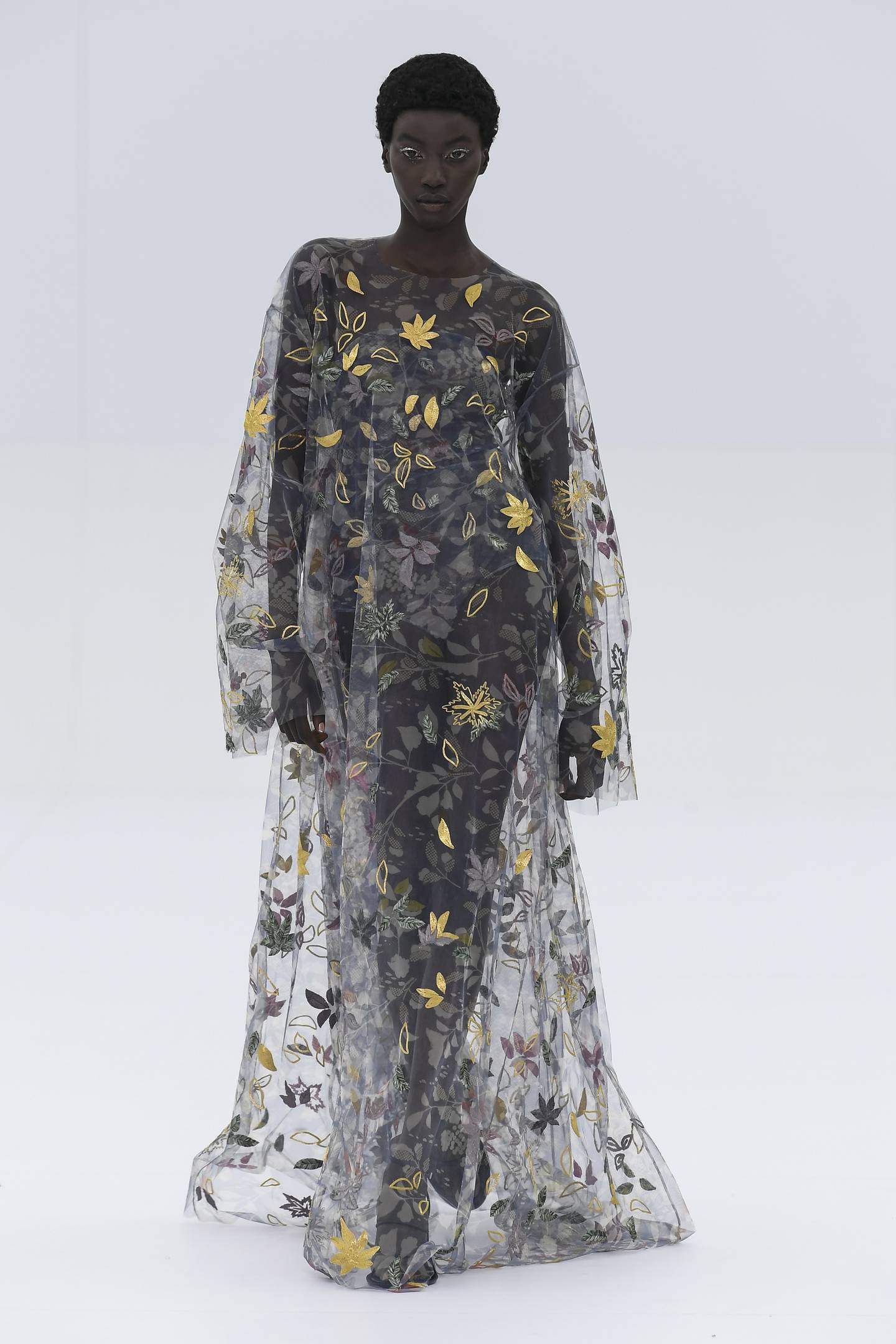
Another would surely be vicuna. “The fabric of kings,” Jones called it. He used vicuna as a woven and a knit, in a double-breasted pantsuit or a sweater dress, looks that passed for daywear in a collection that otherwise emphasised elongated elegance. That suit was, however, accessorised with a necklace featuring a starburst of a thousand diamonds. It introduced Delfina Delettrez Fendi’s first collection of high jewellery for the house. Central to the piece was a big yellow diamond. “It has 30 percent orange inside,” said Delfina. “Like a Roman sunset.”
The glass of fashion cracked again in chiffon dresses overlaid with sequins for a shattered mirror effect. They harked back to Karl Lagerfeld’s Spring 2000 collection for Fendi, a breakthrough at the time. Jones had already gravitated to it for last season’s couture. This time round, it gelled with his desire for simple shapes as a canvas for spectacular fabric effects. The T-shirt and the tank were the simplest. There was also what looked like a reversed polo, floor-length. They all shimmered with exquisite beadwork and featherlight glittering overlays.
Something else Jones shares with Galliano is his chameleon-like ability to osmose different narratives. A mere two weeks ago, he showed a collection for Dior Men which evolved from his passion for the quintessentially English Bloomsbury Group. This Fendi collection felt equally quintessential, but this time it was Italy reflected in the luxurious simplicity — or relaxed simple luxury — of the dresses. “It’s for today,” declared Silvia Venturini Fendi. She also expressed relief at how having Jones at Fendi has eased her stress levels. The last look — Anok Yai in a sheer tulle T-shirt, richly embroidered with tokens of nature — showed why.

